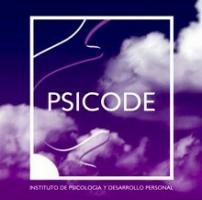Popper: what is it and what are the effects of this drug
Drug use is something usual, and is not exclusive to the youngest. This habit is not something recent either, since since ancient times human beings already consumed all kinds of psychoactive substances. For example, it is known that the Mayans used mushrooms, peyote and ayahuasca centuries ago.
The effects of drugs can be pleasant and make us live amazing and, in some cases, hallucinogenic experiences; However, normally these substances are either harmful to health or have great risks and can cause negative consequences in the life of the consumer. In this article we will focus on a substance known as a popper.
- Related article: "Types of drugs: know their characteristics and effects"
What is the popper?
Drugs are usually divided into three categories based on the effects they produce. They can act solely as stimulants, as depressants or as hallucinogens (known psychedelics). Very few substances have mixed effects, and these can be described as stimulant hallucinogens (for example, ecstasy or ketamine) or as depressive hallucinogens (eg cannabis).
Depressant drugs make the user feel relaxed and calm and often slow the heart rate and respiration. They include alcohol (in high doses), tranquilizers, heroin, or cannabis. Hallucinogens distort reality of the subject who consumes these substances in different ways: his sense of movement or time is may see altered or may suffer from distortions and sensory hallucinations (for example, visual or hearing). They include the LSD or mushrooms.
Stimulants make the user feel alert and energetic. In turn, blood pressure rises and vasodilation occurs. This group includes cocaine, amphetamines and poppers.
The term popper is of colloquial use, and is used to refer to a wide range of psychoactive drugs that include, among some active principles, alkyl nitrites or amyl nitrite. They are consumed by inhalation and are for recreational use. This drug too known as liquid gold, bananas, snappers, rush and other trade names like Stud or Locker Room.
Characteristics of this substance
The most common type of popper is the one that contains amyl nitrite., which is often confused with amyl nitrate used as an additive in diesel fuel, where it acts to improve ignition by accelerating the ignition of the fuel. However, the popper can also contain isopropyl nitrite, 2-propyl nitrite, isobutyl nitrite, butyl nitrite and alkyl nitrite.
The term "popper" began to be used after the popularity of some of these chemical compounds when they were used as drugs. For example, amyl nitrite has been used in medicine for its vasodilator and stimulating effect for the treatment of angina pectoris.
What effects does the popper produce?
Although this drug is rarely used to treat heart problems today, poppers are still being used. As a medical use, amyl nitrite is still used to treat cyanide poisoning.
As a recreational substance, the popper produces stimulation and vasodilation very quickly when inhaled, as well as a feeling of euphoria and sexual desire. At the same time causes a relaxation of sphincters, and therefore known as a sex drug or "gay drug".
In summary, its effects are:
- Produces a rapid high when inhaled, in which the focus of attention and control of the body is lost.
- Libido increases.
- Produces a state of well-being and pleasure.
- Relaxes sphincters and promotes erection in men.
- It causes pleasant perceptual distortions.
- Inconsistent language and slow reaction time.
The pleasant effects of the drug occur shortly after taking it and last only 2 or 3 minutes. Instead, side effects can be long lasting, and may include: nausea, vertigo, headaches, red eyes, congestion in the face and neck, loss of appetite, nosebleeds, tachycardia, hypotension and breathing disorders.
The popper can also be used as a supplement to other designer drugs, such as LSD and ecstasy, which can cause more intense sensations and effects, but also serious poisoning risks.
A popular drug among the gay community
Amyl nitrite was first synthesized in 1844 by Antoine Jérôme Balard and was popularized as a treatment for angina pectoris by Sir Thomas Lauder Brunton. But it did not begin to be used as a recreational drug until the 1960s, initially in the gay community, because this group realized that this drug helped them feel mentally and physically well, increased their sexual arousal and favored the practice of anal sex, making it less painful and more pleasurable.
Thus the poppers are widely used as recreational drugs, especially in the gay scene, and are usually inhaled directly from small bottles. It is a cheap and easy drug to acquire, they can often be sold as air fresheners or as sexual enhancers.
Recent research examined the use of this drug among homosexuals. Apparently, while the use of other substances such as crystal methamphetamine, ecstasy and ketamine have decreased in recent times, the use of poppers and cocaine has remained stable.
This psychoactive substance became part of the gay scene in the most successful days of disco music, that is, the 70s, and was very popular during the 80s and 90s. However, heterosexuals also consume it for its effects. Studies show that in the UK 14.9% of university students and 12.8% of medical students have used this drug recreationally. Furthermore, in this country there seems to be great concern about the recent increase in inhaled drug use among adolescents, including the popper.
Bibliographic references:
- Organization of American States. (2012). Report: The Drug Problem in the Americas.
- San Francisco I., Gemma. (2010). Drug addiction. Basic concepts.



